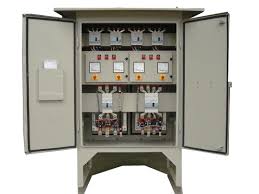How Do Patient Monitoring System Improve Healthcare Outcomes?

One of the most significant advancements is the development of patient monitoring systems. These systems allow healthcare providers to track and manage patient health in real-time, leading to better decision-making, improved patient outcomes, and more efficient healthcare services. This blog explores how patient monitoring systems improve healthcare outcomes, the various types of these systems, and their benefits for both patients and healthcare providers.
Understanding Patient Monitoring Systems
What Are Patient Monitoring Systems?
Patient monitoring system are medical devices or setups used to observe, record, and sometimes interpret a patient’s vital signs and other health metrics. These systems can be used in various settings, from intensive care units in hospitals to home healthcare environments.
Key Features:
- Continuous Monitoring: Track vital signs such as heart rate, blood pressure, oxygen levels, and more.
- Data Recording: Store patient data for later review and analysis.
- Alerts and Notifications: Provide immediate alerts if a patient’s vital signs fall outside normal ranges.
Types of Patient Monitoring Systems
There are several types of patient monitoring systems designed to meet different healthcare needs:
- Bedside Monitors: Used in hospitals to monitor critically ill patients in real-time.
- Remote Monitoring Systems: Allow for the observation of patients from a distance, useful for outpatient care and home monitoring.
- Wearable Devices: Include smartwatches and other wearable technology that monitor health metrics such as heart rate and activity levels.
The Role of Patient Monitoring Systems in Healthcare
1. Enhancing Patient Safety
One of the primary benefits of patient monitoring systems is improved patient safety. Continuous monitoring allows healthcare providers to detect potential health issues early, reducing the risk of complications.
How It Works:
- Immediate Alerts: Systems can send alerts to healthcare providers when a patient’s vital signs are abnormal, allowing for quick intervention.
- Reduced Human Error: Automated monitoring reduces the chance of errors that might occur with manual monitoring.
2. Improving Patient Outcomes
By providing real-time data, patient monitoring systems help healthcare professionals make informed decisions quickly, which can significantly improve patient outcomes.
Benefits for Patient Outcomes:
- Timely Interventions: Early detection of issues allows for prompt treatment, improving recovery rates.
- Personalized Care: Continuous data collection helps tailor treatments to the individual needs of each patient.
3. Supporting Chronic Disease Management
Patient monitoring systems are especially valuable in managing chronic conditions such as diabetes, heart disease, and hypertension. They allow for consistent tracking of a patient’s health over time.
Chronic Disease Management:
- Tracking Progress: Patients and doctors can monitor the effectiveness of treatments and make adjustments as needed.
- Reducing Hospital Visits: By managing conditions effectively at home, patients may reduce the need for frequent hospital visits.
Benefits for Healthcare Providers
1. Efficient Use of Resources
Patient monitoring systems help healthcare providers optimize their resources by allowing them to focus on patients who need immediate attention.
Resource Efficiency:
- Prioritizing Care: Real-time data helps identify which patients need urgent care, enabling better resource allocation.
- Reducing Workload: Automation of routine monitoring tasks reduces the burden on healthcare staff, allowing them to focus on more complex care needs.
2. Improved Decision-Making
Access to continuous and accurate patient data enhances clinical decision-making.
Data-Driven Decisions:
- Comprehensive Insights: Continuous data provides a complete picture of a patient’s health, leading to more informed treatment decisions.
- Trend Analysis: Historical data allows healthcare providers to identify trends and predict potential health issues.
3. Enhanced Communication
Patient monitoring systems facilitate better communication between healthcare providers and patients.
Communication Benefits:
- Real-Time Updates: Healthcare providers can share real-time updates with patients and their families, keeping everyone informed.
- Collaborative Care: Multiple healthcare professionals can access the same data, fostering a more collaborative approach to patient care.
Benefits for Patients
1. Empowering Patients
Patient monitoring systems empower patients by giving them access to their own health data.
Patient Empowerment:
- Better Understanding of Health: Patients can see how their behaviors and treatments affect their health, encouraging healthier choices.
- Active Participation: Access to real-time data encourages patients to be more involved in their own care, leading to better adherence to treatment plans.
2. Convenience and Comfort
For patients, especially those with chronic conditions, remote monitoring provides the convenience of receiving care from the comfort of their homes.
Convenience Factors:
- Reduced Travel: Patients don’t need to travel to the hospital or clinic for routine monitoring.
- Peace of Mind: Knowing that their health is being monitored continuously gives patients peace of mind.
3. Faster Recovery Times
Continuous monitoring allows for early detection and treatment of issues, leading to faster recovery times.
Faster Recovery:
- Prompt Treatment: Early intervention helps prevent complications, allowing patients to recover more quickly.
- Tailored Rehabilitation: Data from monitoring systems can be used to create personalized rehabilitation programs that are more effective.
Overcoming Challenges in Patient Monitoring

1. Data Security and Privacy
With the increasing use of technology in healthcare, data security and privacy are major concerns. Ensuring that patient data is protected is crucial.
Solutions:
- Encrypted Data: Use of encryption to protect data during transmission and storage.
- Compliance with Regulations: Adhering to healthcare regulations such as HIPAA to ensure patient data is handled securely.
2. Integration with Existing Systems
For patient monitoring systems to be effective, they must integrate seamlessly with existing healthcare IT systems.
Integration Strategies:
- Interoperability Standards: Using systems that adhere to interoperability standards ensures compatibility with other healthcare software.
- Training for Staff: Providing training to healthcare staff ensures they can effectively use and integrate new monitoring systems.
3. Managing Large Volumes of Data
Continuous monitoring generates large amounts of data, which can be challenging to manage and interpret.
Managing Data:
- Automated Analysis Tools: Using AI and machine learning to analyze data and highlight significant trends or anomalies.
- Efficient Data Storage: Implementing robust data storage solutions to handle the volume of data generated.
Conclusion
Patient monitoring systems are a vital component of modern healthcare, offering numerous benefits that improve both patient outcomes and the efficiency of healthcare services. By providing real-time data, these systems enable timely interventions, enhance patient safety, and support better management of chronic conditions. For healthcare providers, they offer tools for efficient resource allocation, data-driven decision-making, and improved communication. For patients, they provide empowerment, convenience, and faster recovery times.
As technology continues to advance, patient monitoring systems will likely become even more integral to healthcare, helping to create a more connected, efficient, and patient-centered healthcare system. Investing in these systems not only enhances care but also positions healthcare providers to meet the evolving needs of their patients.
Note:- To read more articles visit on todaybusinessposts.











